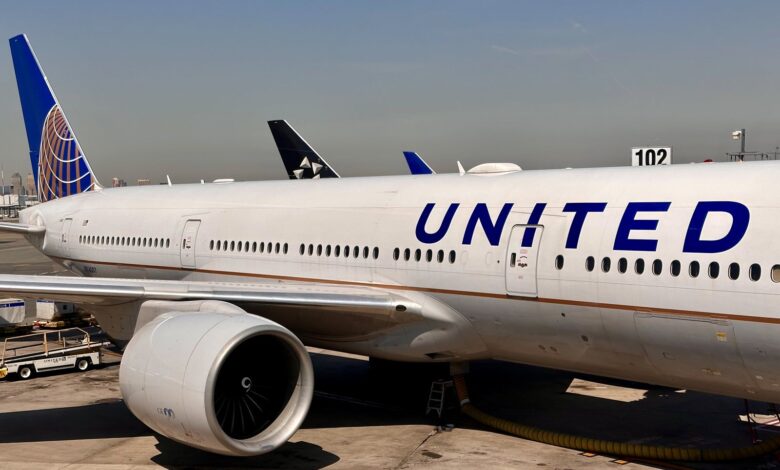United Airlines hubs: How United started and where it flies now

The airline founded by William Boeing, the famed creator of a leading aerospace manufacturer, began modestly as a postal delivery service. Boeing Airplane Company, previously named Pacific Aero Products, added international airmail to its services after World War I.
It made its first international airmail delivery in 1919 and won an airmail contract for service between San Francisco and Chicago in 1927. This particular contract is relevant to this guide because the Model 40A acquired for this route could carry two passengers in addition to mail. So, Boeing created a new company named Boeing Air Transport for this mail and passenger service. According to the Disciples of Flight, Boeing Air Transport delivered an estimated 1,300 tons of mail and carried 6,000 passengers in the first year of operation.
Over the following years, William Boeing strategically acquired several more companies to create a powerhouse for airline operations, development and manufacturing named United Aircraft and Transport Corporation. However, the Air Mail Act of 1934 forced the powerhouse company to split into three separate companies, with the airline operations becoming United Airlines.
United Airlines route history
According to the United Airlines Historical Foundation, Stout Air Services, a predecessor to United Airlines, was the first regularly scheduled passenger airline in the United States. The first regularly scheduled flights were from Detroit to Grand Rapids, Michigan, in 1926. This route ended in 1927 when the airline began twice-daily service from Dearborn, Michigan, to Cleveland. Boeing’s United Aircraft and Transport Corporation — part of which would become United Airlines in 1934 — acquired Stout in 1929.
United Airlines focused on domestic routes — including its signature coast-to-coast route from New York to San Francisco via Chicago — until 1966, according to the SFO Museum. It added service to Hawaii in 1947 and merged with Capital Airlines in 1961, dramatically bolstering its presence throughout the Southern and Midwestern U.S. In 1984, United became the first airline to serve all 50 U.S. states.
In the early 1980s, United only served Tokyo and Hong Kong from Seattle. However, United capitalized on a flailing Pan Am in 1985, acquiring its Pacific division and aircraft. A year later, it served 13 Pacific cities, including Auckland; Bangkok; Beijing; Manilla, Philippines; Seoul, South Korea; Singapore; Sydney; and Taipei, Taiwan. When Pan Am finally ceased operations, United pounced on acquiring its routes to Latin America and London.
Related: 4 reasons someone in your family needs a United credit card
United Airlines hubs
When you think of United Airlines hubs, you likely think of Chicago. The airline is headquartered in Chicago, and Chicago’s O’Hare International Airport (ORD) is one of its largest hubs. Chicago became a United hub at least partially as a result of Boeing’s purchase of National Air Transport — a large airline based in Chicago — in 1930. When Boeing split into three companies in 1934, the previous National Air Transport was included in what became United Airlines.
United Airlines and Continental Airlines merged in 2010 and were fully integrated in early 2012, opting to keep the United Airlines name. At the time of the merger, Continental already had established hubs in Houston, Guam and Newark. Houston is a major United gateway to the Caribbean, Mexico, Central America and South America, while United serves destinations worldwide from Newark. Meanwhile, United offers short flights to Japan, the Philipines and Micronesia from Guam — including the United Island Hopper.

Daily Newsletter
Reward your inbox with the TPG Daily newsletter
Join over 700,000 readers for breaking news, in-depth guides and exclusive deals from TPG’s experts
Currently, United’s biggest hubs are:
- Chicago’s O’Hare International Airport (ORD)
- Denver International Airport (DEN)
- Guam’s Antonio B. Won Pat International Airport (GUM)
- Houston’s George Bush Intercontinental Airport (IAH)
- Los Angeles International Airport (LAX)
- Newark Liberty International Airport (EWR)
- San Francisco International Airport (SFO)
- Washington, D.C.’s Dulles International Airport (IAD)
In addition to these United hubs, United’s airports page states Frankfurt Airport (FRA), London’s Heathrow Airport (LHR), New York’s LaGuardia Airport (LGA), Sao Paulo’s Guarulhos International Airport (GRU), Tokyo’s Haneda Airport (HND) and Tokyo’s Narita International Airport (NRT) are key airports.
Dropped United Airlines hubs
Like most long-standing airlines, United has added new hubs — including some gained through mergers — and closed existing hubs over the years. Among the carrier’s notable former hubs are:
- Cleveland Hopkins International Airport (CLE): Served as a hub of Continental Airlines and then United Airlines until 2014
- Miami International Airport (MIA): Served as a United Airlines hub until 2004
- Tokyo’s Narita International Airport (NRT): Became a United Airlines hub after acquiring Pan Am’s Pacific assets in 1986, but effectively closed once United and ANA formed a transatlantic joint venture in 2011; served as a United Airlines flight attendant hub until 2020
Related: Why I love my United Explorer Card even though it’s no longer my primary credit card
International hubs for United Airlines partners
As discussed above, United Airlines operates at some airports outside the U.S. that it doesn’t classify as hubs but instead calls key airports. United serves seven U.S. cities from London’s Heathrow Airport (LHR), seven continental U.S. cities from Tokyo, six U.S. cities from Frankfurt and four U.S. cities from Sao Paulo.
Apart from that, United Airlines partners with many other airlines. Here are some international airports that serve as hubs for United’s Star Alliance partners:
- Addis Ababa Bole International Airport (ADD) for Ethiopian Airlines
- Auckland Airport (AKL) for Air New Zealand
- Bangkok’s Suvarnabhumi Airport (BKK) for THAI Airways
- Bogota’s El Dorado International Airport (BOG) for Avianca
- Brussels Airport (BRU) for Brussels Airlines
- Cairo International Airport (CAI) for Egyptair
- Frankfurt Airport (FRA) for Lufthansa
- Istanbul Airport (IST) for Turkish Airlines
- Lisbon Airport (LIS) for TAP Air Portugal
- Panama City’s Tocumen International Airport (PTY) for Copa Airlines
- Seoul’s Incheon International Airport (ICN) for Asiana Airlines
- Singapore Changi Airport (SIN) for Singapore Airlines
- Taiwan Taoyuan International Airport (TPE) for EVA Air
- Tokyo’s Narita International Airport (NRT) and Haneda Airport (HND) for All Nippon Airways (ANA)
- Toronto Pearson Airport (YYZ) for Air Canada
- Warsaw Chopin Airport (WAW) for LOT Polish Airlines
- Zurich Airport (ZRH) for Swiss
Related: The best websites to search for Star Alliance award availability
Bottom line
United Airlines has been a force in the aviation industry since its early days — and its shrewd purchases and partnerships have helped to maintain its status as one of the largest airlines in the world.
You can reach over 1,200 destinations in 186 countries with United Airlines and its Star Alliance partners. Star Alliance is the largest global airline alliance, making the United MileagePlus loyalty program an important tool in the points and miles hobby.




